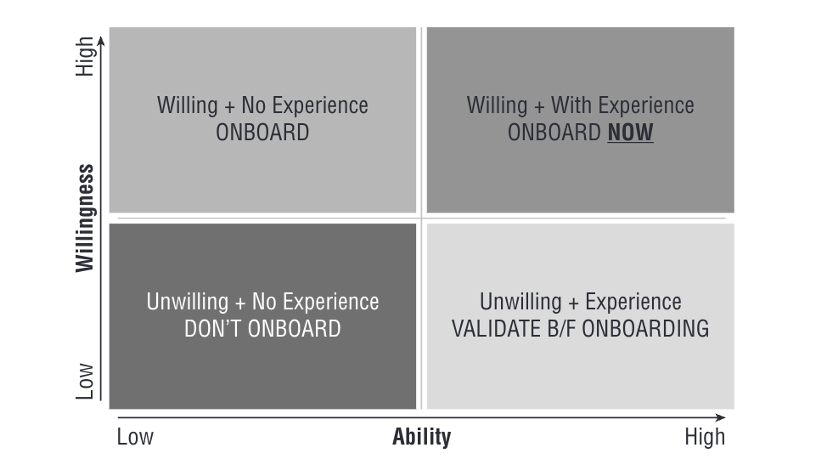Unpack the “10 AI Archetypes” to transform your mindset

- Enterprises have become smitten with the potential of AI but the lack of expertise in AI deployment is frustrating many executives.
- In reality, AI deployment is less of a technology problem than a mindset problem.
- Leaders aspiring to land AI should focus on building an environment where AI can thrive as an integral part of their organization’s innovation journey.
The success of AI projects depends on the team you assemble. As with all new innovations, it brings change and for organizations and individuals, change is difficult — especially in the fast-evolving world of AI. Some will adopt it, some won’t understand it, and others will reject it. That’s why AI projects reveal both heroes and villains in your workforce. It’s important to identify and maximize the number of heroes to increase the chances of success.
As with any technology deployment, the process of change management required to transition individuals, teams, and your organization from their current state to the desired state is often the most time-consuming and potentially frustrating aspect when not done right. This is especially true with AI deployments because if you don’t have the right people with the right mindset in the right roles, the project will end before it starts. As such, the team you assemble or inherit plays the most crucial role in determining the success of your AI projects.

Challenges are inevitable with AI. Not because of AI itself, but because it’s new to your organization and new things take time to understand and deploy. It won’t be perfect, it may be messy, and so you need a team that can rebound and resolve issues as they arise.
Whether you’re establishing a new team or inheriting a team, be thoughtful in the assembly. As a business leader venturing into the world of AI, or a practitioner trying to construct a team that consistently produces favorable outcomes, you need to do more than simply recruit exceptional talent. It involves pinpointing individuals who embody:
Grit — An unwavering determination that empowers an individual to persist through obstacles.
Ambition — A relentless drive to work towards accomplishments and advancements.
Resilience — The ability to swiftly recover from difficulties and adjust to change.
While people are inherently diverse in varying ways, their work ethic and how they view challenges are key in a successful deployment. As such, if you have the authority to assemble a team for your AI project, prioritize these three virtues above all.
If you get to assemble a team from scratch, the framework below serves as a convenient tool to aid you in your decision-making process when it comes to hiring talent or onboarding consultants.

The four categories in this framework describe:
1. The experienced and willing. Seek these individuals first. Onboard them as quickly as possible as they have a wealth of knowledge and are willing to endure the inevitable challenges without getting discouraged. They will be an asset to you and other team members in any AI project.
2. The inexperienced and willing. Embrace these individuals as well, despite their lack of experience. Their determination and drive will be valuable. Technology, processes, and best practices can be taught, but mindset, positivity, and the innate desire to explore new ventures is a rare quality. Therefore, you need people like this on your project.
3. The unwilling and experienced. This group of individuals poses a challenge. Quite a bit of time is needed to discern whether their unwillingness to contribute and be productive team members is because they’re unmotivated, resistant to change, or other factors. If you feel the time is worth it — to understand the baseline reason to turn it around — invest in them. If, however, your gut tells you their resistance is immovable, it’s best to exclude them from your AI project. They will be a heavy anchor that puts a burden on you and your team.
4. The unwilling and inexperienced. You have no space or room for these individuals. Managing them is time consuming with little return in the time invested.
If building a team from scratch isn’t possible and you’re required to work with individuals from other cross-functional teams, you’ll need to manage the personalities and the role they play on your AI project. This will require you to understand the “10 AI Archetypes” involved in deployments:
- The Naysayer
- The Evangelist
- The Doer
- The Discerner
- The Blind
- The Curmudgeon
- The Saint
- The Optimist
- The Data Scientist
- The Know-It All
For the sake of this article, I’ll describe three — The Naysayer, The Discerner, and The Evangelist — to start the thought process. The details of all ten and how to best engage with them is discussed in detail in Your AI Survival Guide.
The Naysayer. These people are the easiest to spot. They often are the first to point out problems, are vocal about what won’t work, and tend to have a negative outlook on things in general. While many consider these individuals a drag, they can be an asset to the team on an AI project if used in the right way. While you wouldn’t bring in a Naysayer for your vision, mission, use case sessions, you should pull them in when reviewing both your design and solutions. Because their default is to spot problems, they can be used to correct assumptions and point out blind spots — both of which are needed with AI Projects.
The Discerner. At first, one may mistake these individuals for Naysayers. But when better understood, you’ll find they have a genuine desire to make sure ideas are thoroughly considered before implemented. They do this by asking a lot of questions. Some can find this annoying, however, as the project leader, it’s an asset to you and your project because the discerner asks questions others overlook. They possess a desire to comprehend the underlying reasons and objectives behind your thoughts and ideas, to make sure what you’re deploying aligns with the original objective. They’ll be of great value when defining your strategy and use cases.
The Evangelist. This archetype represents the quarterback on a team, spreading good business energy and focusing on the solutions not the problems. Their energy is contagious and they’re highly effective in getting critical mass around an idea or a vision. They are key to leverage during your vision, mission, strategy, and use-case discussions, while keeping the momentum going during your design and deployment phases where fatigue often sets in. A key with evangelists is that you must protect their energy. You can’t include them in detailed solution discussions or daily/weekly status reports as their role is to energize the team, not become bogged down in the details.
As you can see, leveraging the right person, in the right role, and during the right phase of your AI project is key. The way you build your team and how you leverage talent is the biggest determining factor in your success. The technology hurdles are easier to overcome compared to the people problems that new innovations bring to organizations.





